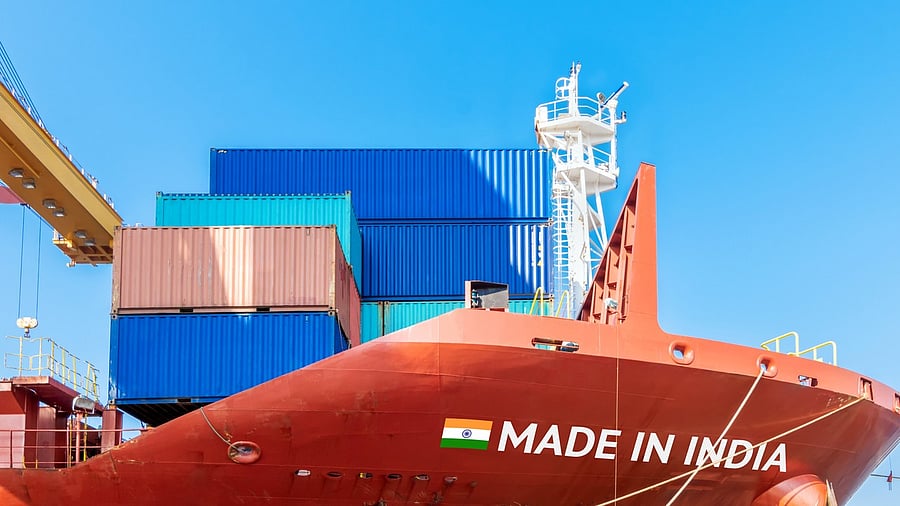
Indian exports.(Representative image)
Credit: iStock Photo
New Delhi: India’s overall exports are likely to hit the $1 trillion mark in the current financial year from $825 billion recorded in the year ended March 2025, led by robust growth in the services sector, the Federation of Indian Export Organisations (FIEO) said on Tuesday.
Speaking to reporters, FIEO President S C Ralhan said the country’s merchandise exports are projected to grow from $437 billion in 2024-25 to $525-535 billion in the current financial year. Services exports may jump to $465-475 billion in 2025-26 from $387 billion in the previous year.
According to Ralhan, India is likely to benefit from the US tariff policies. “We are hopeful for a zero tariff regime under the bilateral trade agreement. Even if tariffs stay at 10%, that’s still a win for us,” he said.
CEO and Director General of FIEO Ajay Sahai said exports of Apple iPhones and other smartphones are likely to post robust growth despite the US tariffs. Sahai said even with 25% tariff Apple’s iPhone production in India would be cheaper than the US.
US President Donald Trump last week threatened to impose 25% tariffs on non-US made iPhones.
Ralhan said growth in India’s services exports is likely to accelerate to 20% in the current financial year from around 13% year-on-year expansion recorded in 2024-25. FIEO has projected 12% year-on-year growth in merchandise exports. In the financial year ended March 2025 the merchandise exports were nearly the same as in the previous year.
FIEO has called for diversification of export markets to reduce the risk from policy changes or strategic problems in specific regions. “Expanding into emerging markets and strengthening trade relations with existing partners can mitigate risks associated with over-reliance on specific regions,” it said.
“Negotiating and implementing Free Trade Agreements (FTAs) with key partners can facilitate easier market access and reduce trade barriers,” said Ralhan.
FIEO President has called for issuing Digital Product Passport (DPP) in India in line with the European Union. The DPP can digitally record, store, and share information about a product’s entire life cycle—from raw materials to manufacturing, usage, recycling, and disposal.
“We request the government to create sector-specific task forces to study DPP requirements and build compliance roadmaps and develop a national framework or digital infrastructure that can help exporters generate DPPs efficiently,” he said.
“The Government may also provide assistance or grants to MSMEs to adopt traceability and product lifecycle management systems,” Ralhan added.